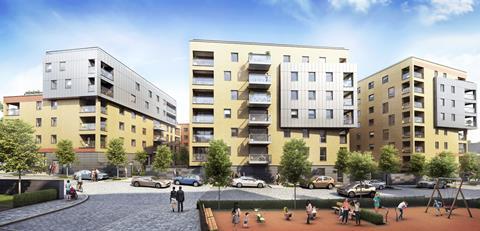Last week, I had the pleasure of sitting down with my Dutch housing association counterparts to try to explain to them how the London market works and how people struggle to afford to live in London. Discussing this out loud really brought home just how broken the market is.

The look of shock on their faces made me realise we are just not being radical enough with our proposals - but we all know that.
For starters, statistics show that while we are building many more homes, we are not building enough at prices people can afford. We are putting big subsidies into shoring up the private sale market to ensure more people can afford it, rather than providing subsidies for homes that are cheaper to rent.
One of the most powerful presentations we showed our Dutch colleagues was on the private rented sector (PRS), which came from a young renter in the UK who worked for a housing association, and is also campaigning with Generation Rent, an organisation pushing for better and more affordable housing in the PRS.
He clearly explained how he had been forced to move on numerous occasions over the years, paid a huge sum in rent and had lived in properties with poor health and safety standards - including one where pigeons had nested on his fridge!

The injustice here is that as someone who needs subsidy to live decently and do a valuable job in the city, he gets none. The young renter suggested solutions: encourage build-to-rent (BTR), better standards and an element of rent control.
Finding solutions
Next came the discussion of BTR vs buy-to-let (BTL), tax changes, tenancy lengths, affordable housing and the flight of workers who can’t afford to live in the city. We have all had these conversations. So what can we actually do about it?
When Thames Valley Housing set up Fizzy Living, we wanted to address the needs of this disenfranchised group. We wanted to provide a good service and respect their need for decent housing. We now do this, but the job is far from over.
My argument is that now is the best time ever to try and use the tax system to help reduce rents. If BTL landlords face huge tax increases over the next few years, why not find a way to give some of those benefits back to tenants in a way that also helps landlords?

If landlords reduce their rents, they could be recompensed through a reduction in the tax they pay. If they offer longer tenancies with reduced rents, they could also claim this back through a reduction in the new tax. This would mean the tenant always wins.
As tax revenues rise through BTL investors, we should also give some of it back to the BTR sector so we can develop more homes. Give stamp duty breaks and incentivise more discounted market rent through planning.
The benefits of this tax change can be passed on to those who desperately need more housing at a level they can afford, in turn helping employers retain staff and keeping the welfare bill down for workers who are claiming benefits to rent.
This won’t address those who want to buy, but it will help those who need a better rental model. Let’s use these tax changes to give them a better deal. The Dutch would.






























No comments yet